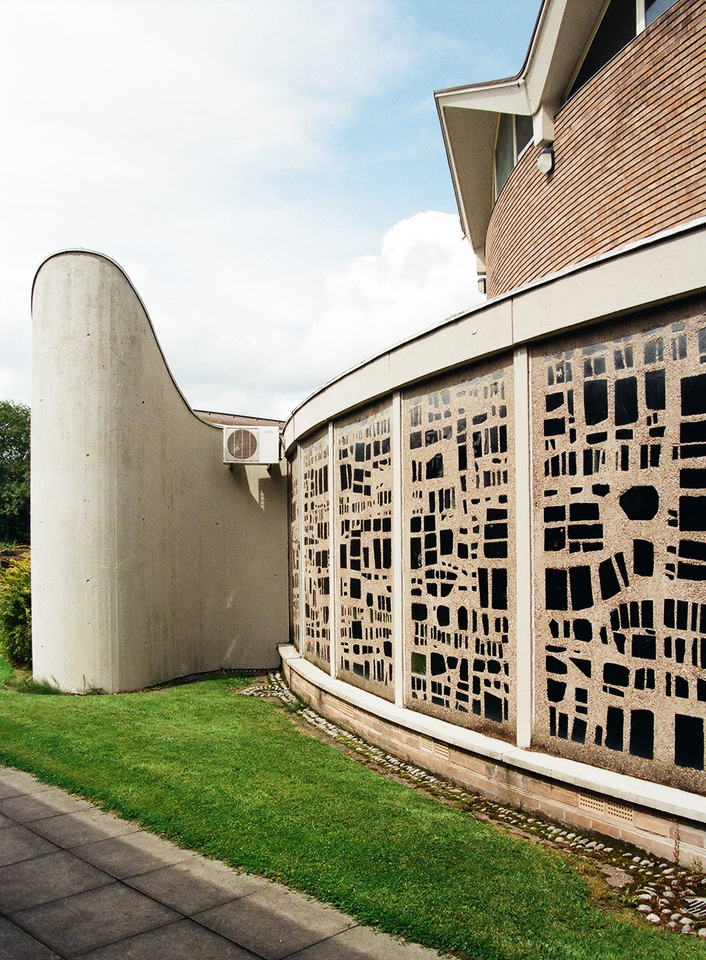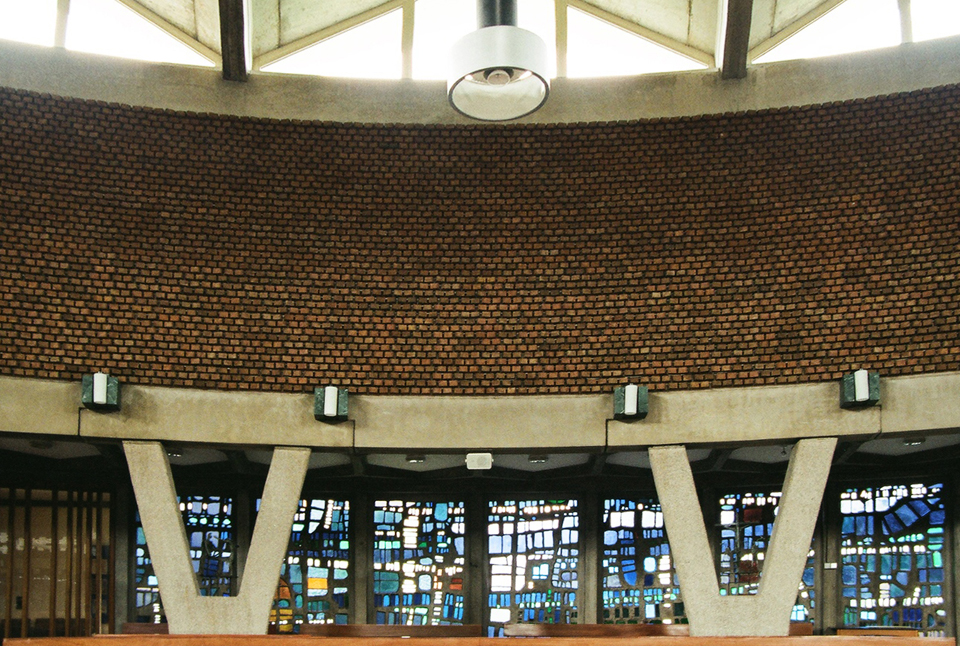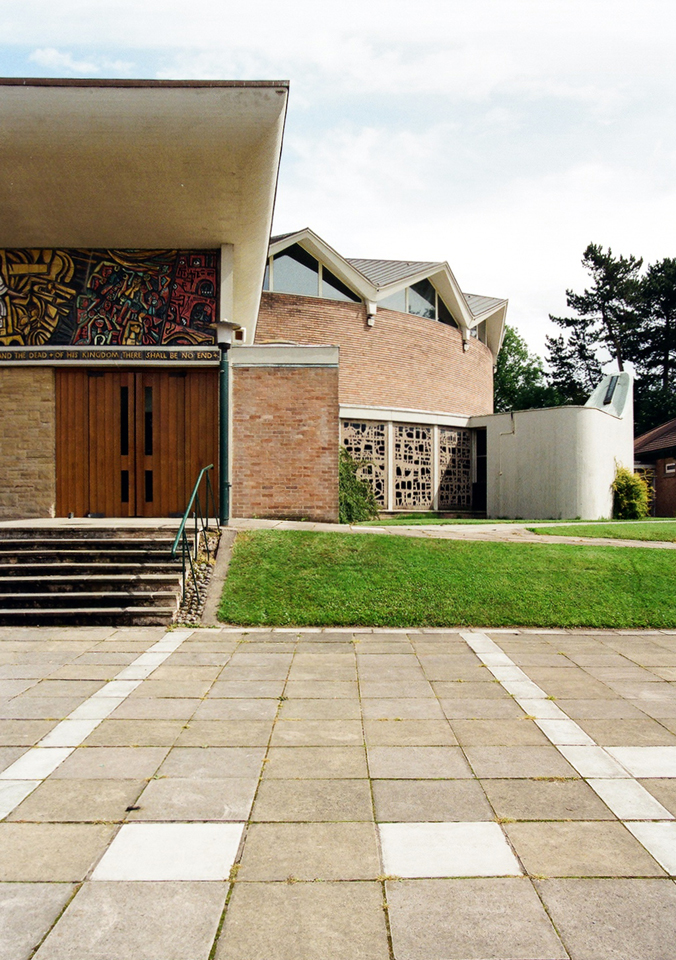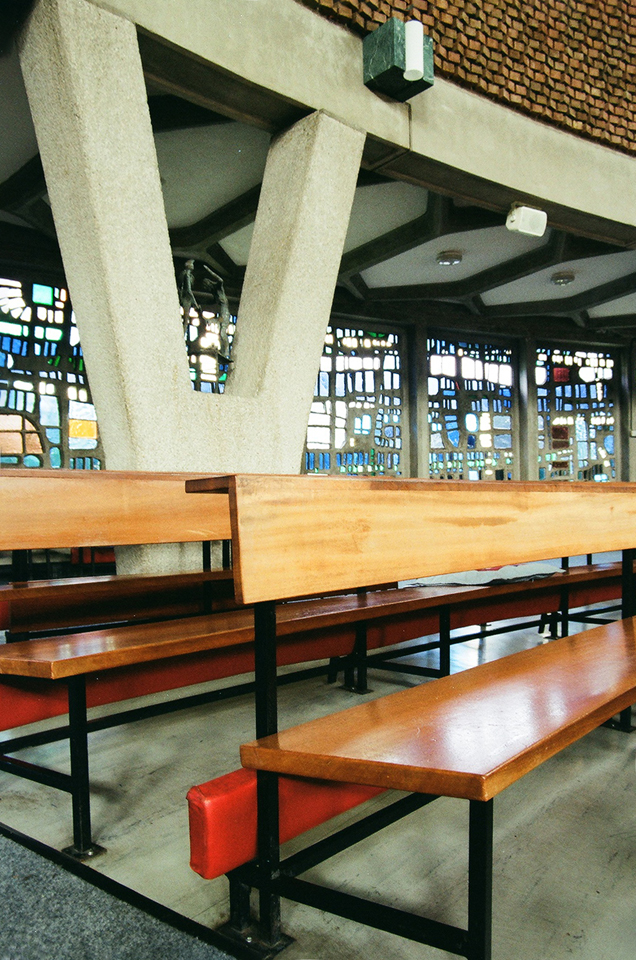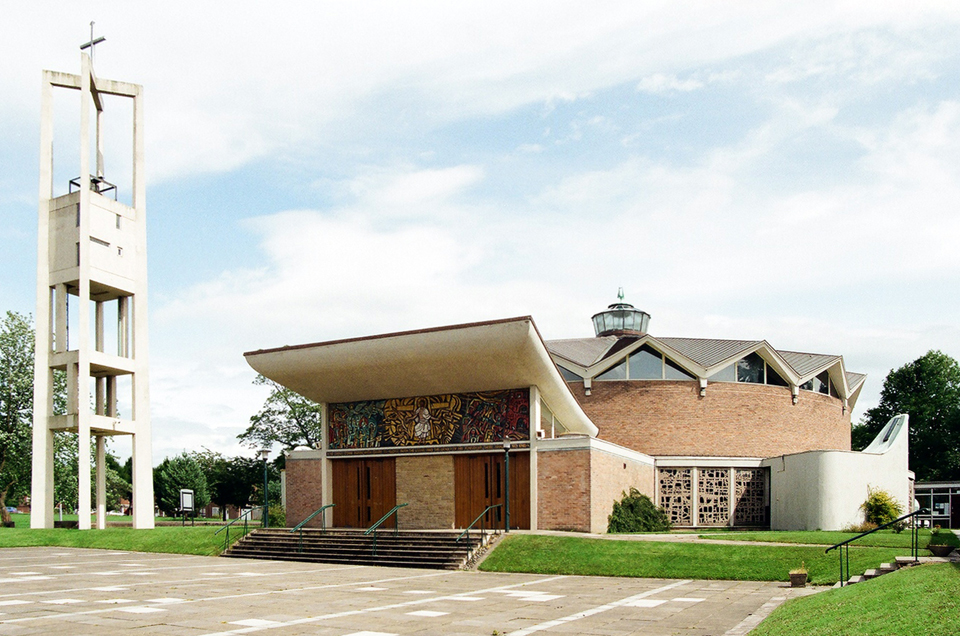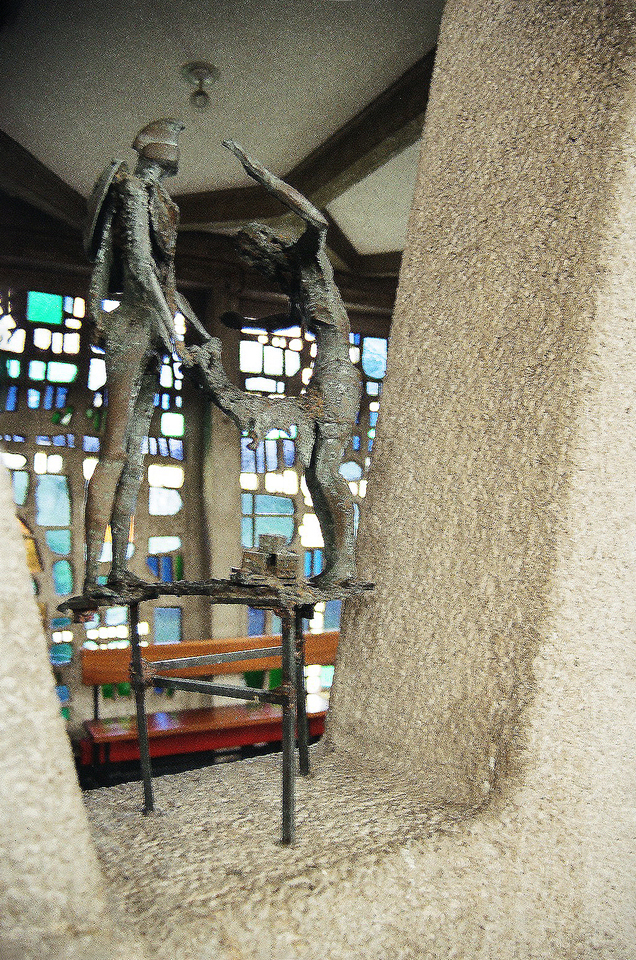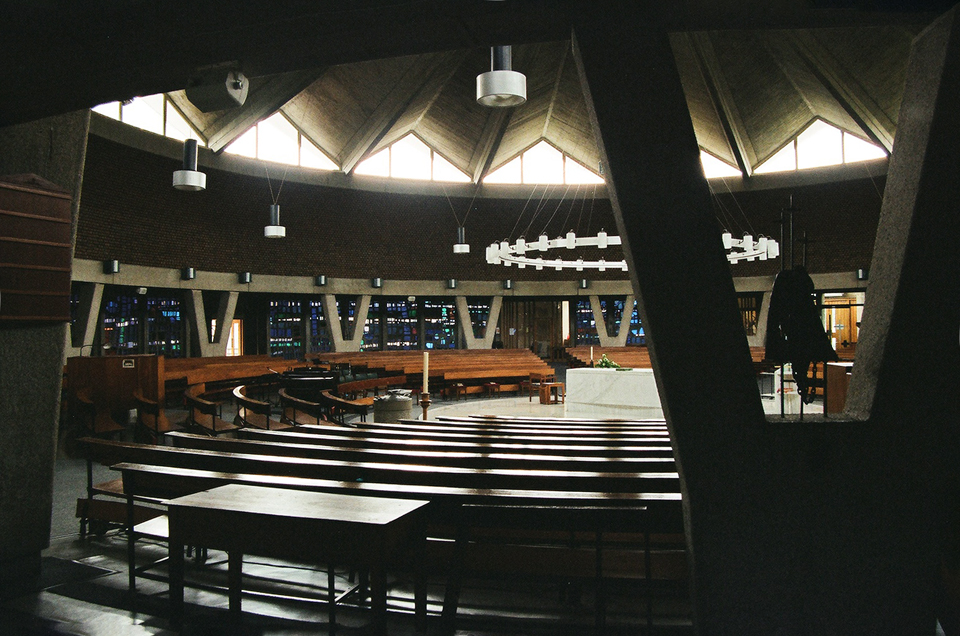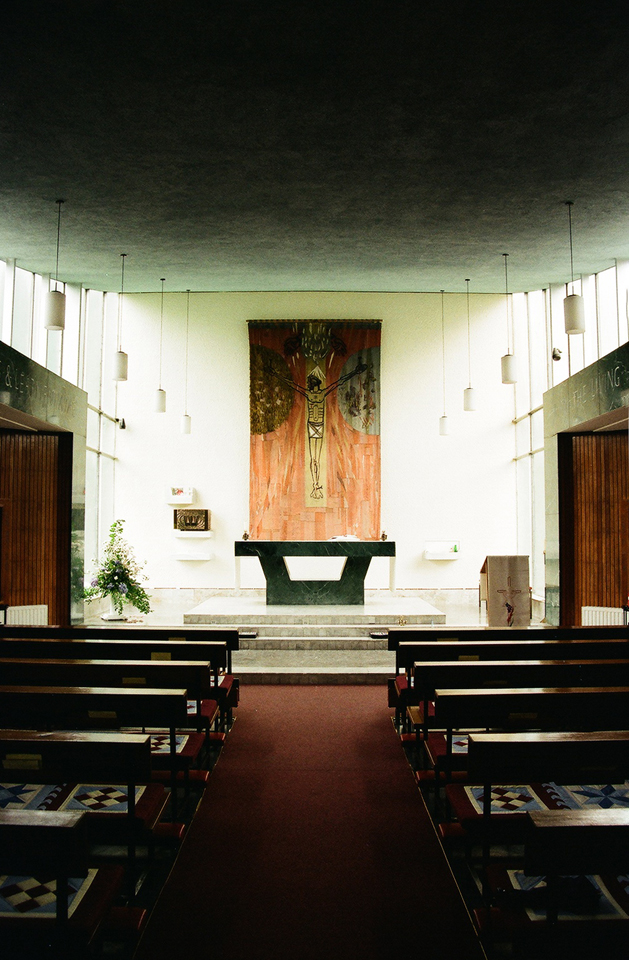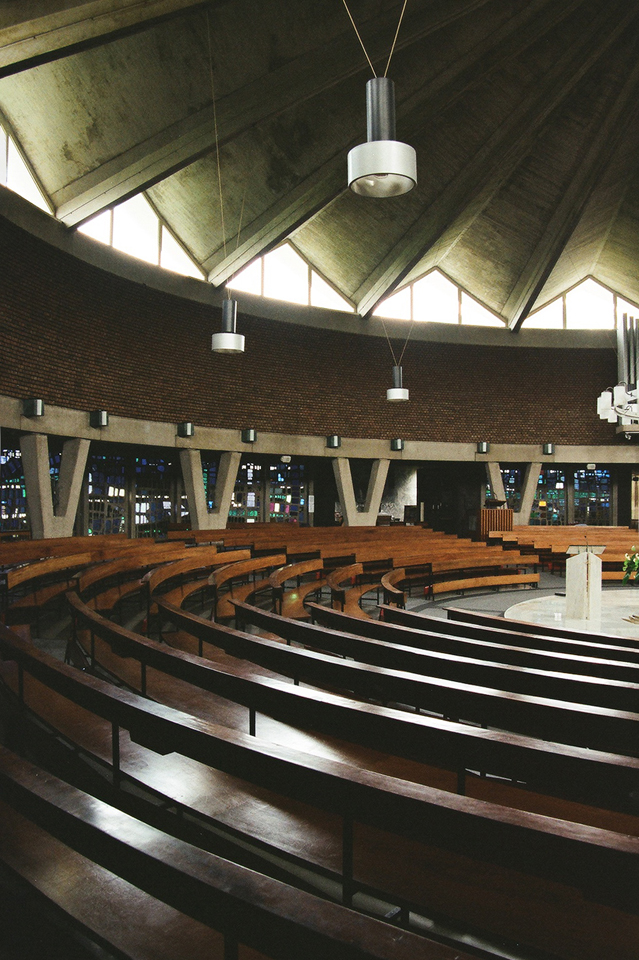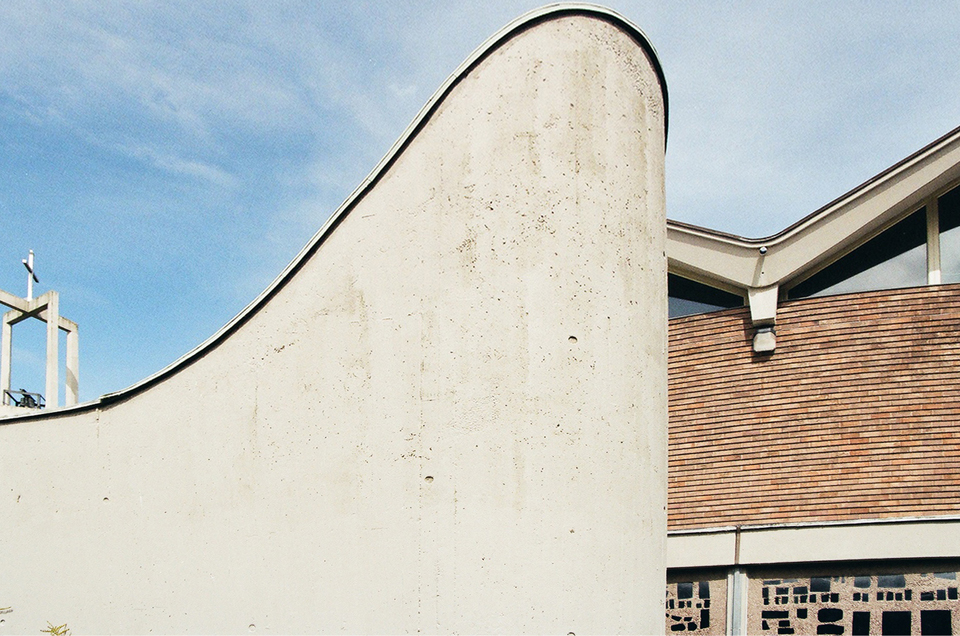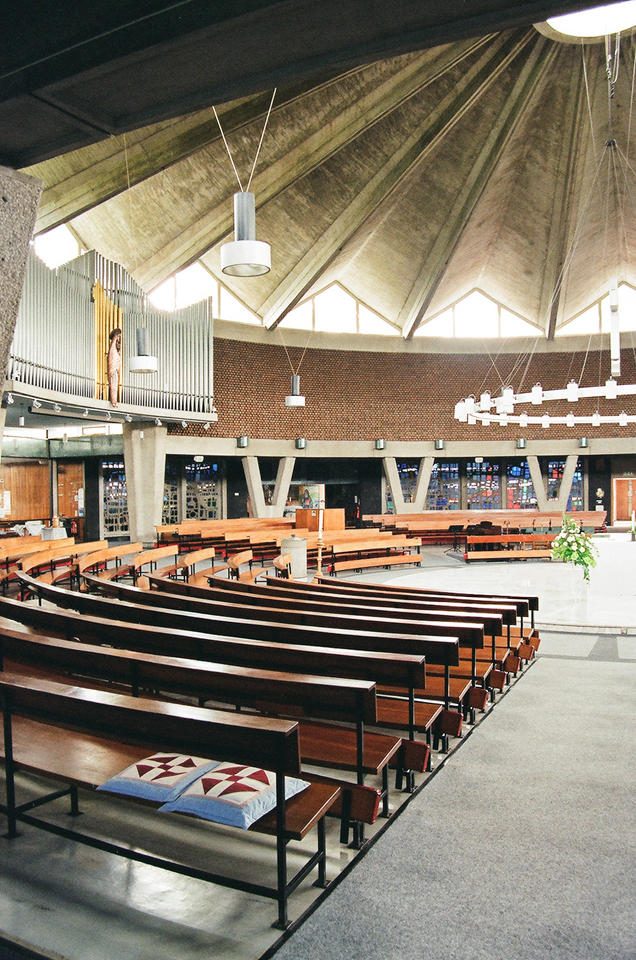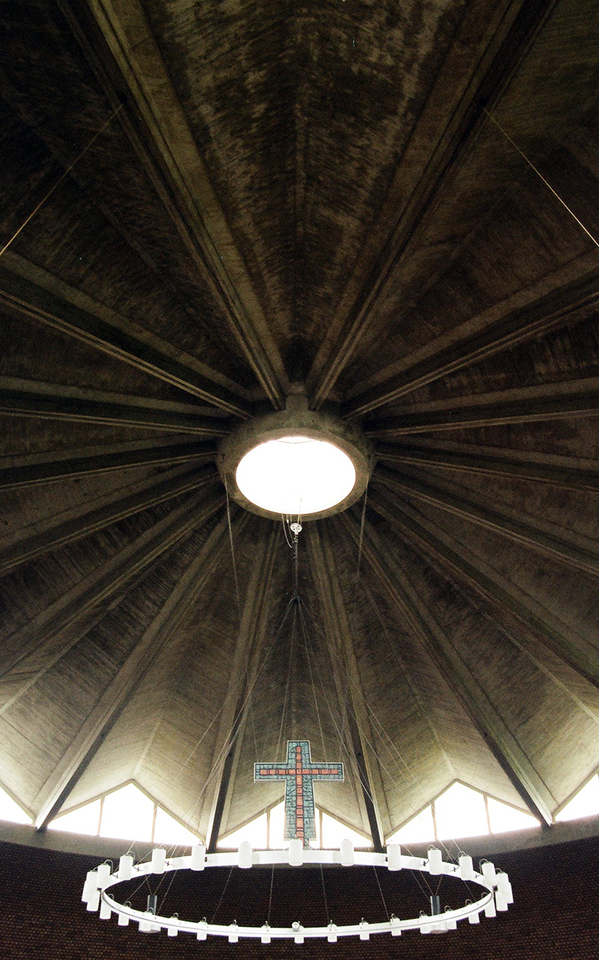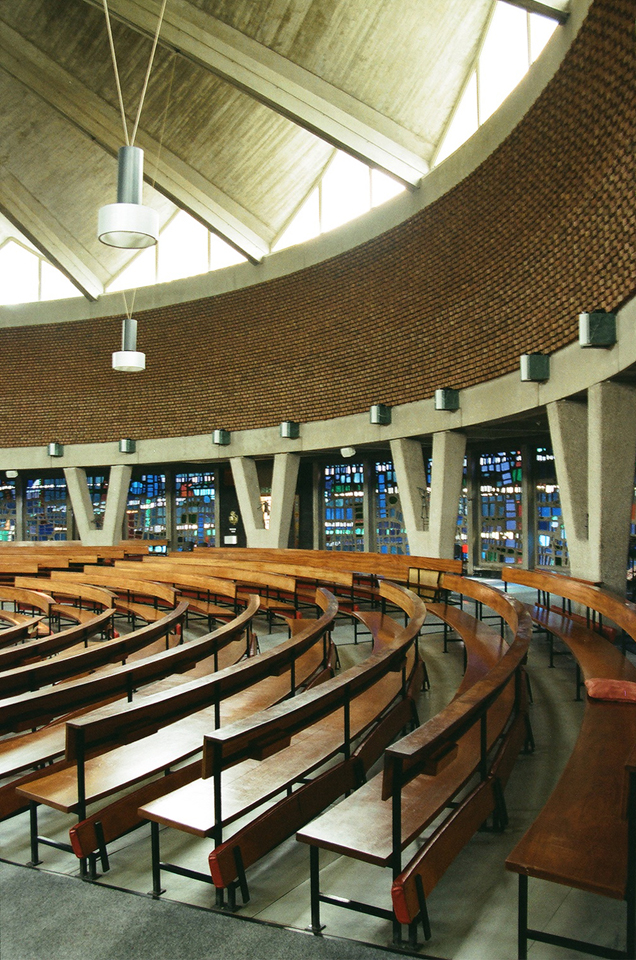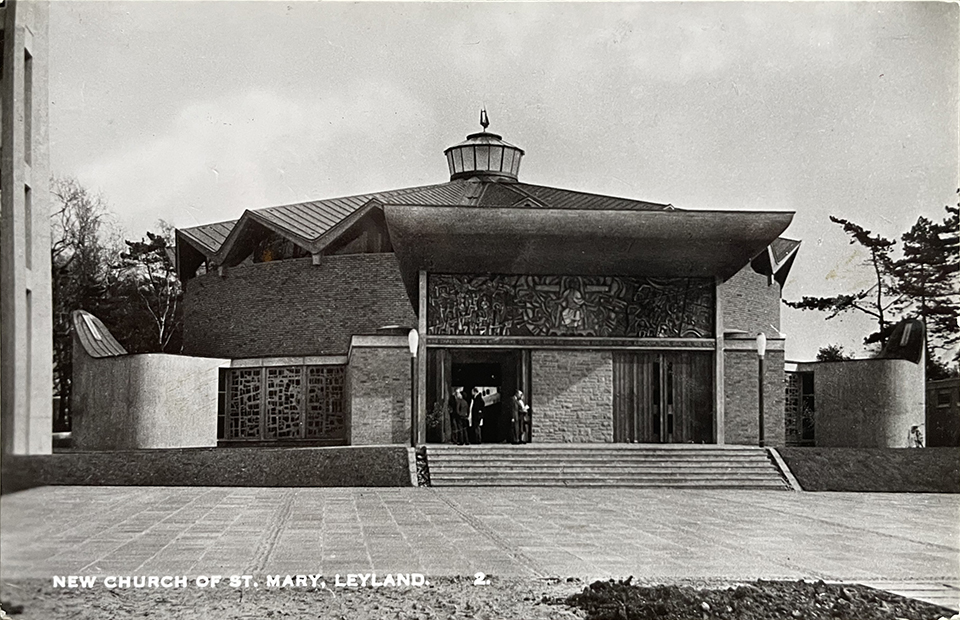St. Mary's Church
1964
As Leyland expanded in the post-war, the parish of St. Mary’s needed to accommodate growing numbers of Catholics, a situation recognised by its priest, Fr. B.E. Fitzsimons. Fitzsimons was something of an amateur architect and set about his own European tour to look at modern churches where he admired the fashion for dalle de verre in the work of artists like Ferdinand Leger and Gabriel Loire. In 1959, the local newspaper published Fitzsimon’s design for a new church, octagonal in plan, with a central altar and the space to seat 1000 worshippers. The scheme would have to be handed to an architect for its development and realisation but, despite his love for dalle de verre, Fitzsimon also stipulated that hand-made bricks were more favourable than concrete in the Lancashire weather. The architect was Polish immigrant Jerzy Faczynski of Weightman & Bullen, a Liverpool firm specialising in schools and churches for the Roman Catholic Archdiocese. Faczynski was born in Jenakijewo in 1917 and arrived in Britain as a refugee in 1941. He studied at the Polish School of Architecture at Liverpool University and later became a lecturer in drawing in at the Polish School of Architecture in London from 1946-52. During his lifetime Faczynski designed more than 50 churches. The site for the new church was within what had been a well-kept garden and away from the industrial parts of the town. Mature trees were retained to ‘frame and shelter’ the church. The church itself can be read as three tiers, the lowest made from a series of bold forms that contain the narthex and side chapels and are individually expressed. Large sections of the walls to the main ecumenical space are dalle de verre by Patrick Reyntiens. The second tier is a drum finished in a brick with a pinkish hue, likened to the Castel San Angelo on the Tiber. Above this is the folded plate structure of the roof with a central lantern and finial designed by Frederick Bushe. Away from the main building is a contemporary campanile constructed in concrete housing a bell donated by its maker, John Taylor. The interior is remarkable in the exposition of its structure and the spatial effect that the precast V shaped columns create, providing a clear span so that the entire congregation is in the round and enabling an outer cloister that connects all of the side chapels. This structural solution means that the dalle de verre walls only have to carry their own weight and the brick drum acts as a ring beam from which the roof springs, with repeated triangular apertures forming a type of clerestory windows – it is legible and atmospheric. Beyond its striking form, the church is characterised by the amount of bespoke artworks which are both embedded and adorn its fabric. As well as the Reyntien walls, there is a ceramic tympanum by Adam Kossowski showing the Last Judgement, Stations of the Cross cast in bronze by Arthur Dooley, pews by Robert Thompson (known for his trademark wooden mice as signatures), a tapestry designed by Faczynski, fibreglass relief by David John and various pieces of altar furniture by Robin McGhie. This was not just a modern church, it was a piece of high craft in its entirety and was recognised as such by its listing in 1998.
